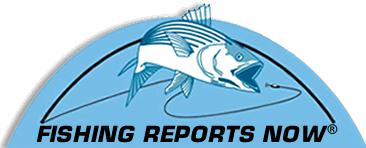New Jersey Freshwater Fishing Report 9-30-15
<b>NEW YORK</b>
<b>Salmon River</b>
Coho salmon shot up the river Monday, a nice squirt, said Jay Peck from <b>Jay Peck Guide Service</b> that day in a phone call for this report. Some Chinook or king salmon were also around in the river. The migration of cohos was good to see, after not many salmon migrated into the river, from Lake Ontario, during the previous week. Anglers hoped the fish on Monday were a turn for the better for the river’s salmon migration that could erupt any moment. Salmon fishing was actually okay that day. The fishing with Jay hooked a few and netted a couple. In previous days, trips covered lots of water for a bite or two. The river on Monday ran at 335 cubic feet per second. Rain was forecast for Monday night and Tuesday. That might’ve only helped maintain the water level, instead of raising it. But Jay hoped for steady rain for two or three days, because higher water in the river could draw more salmon in. The river was 62 to 64 degrees, the right temperature for the migration. Air temperatures reached maybe the mid-70 degrees during daytimes, and at night were chilly, dipping to the low 50s. Those were typical temperatures for the season, too, and there were some pleasant fall days. A friend reported decent salmon fishing on Lake Ontario off the mouth of the river. Those fish will need to shoot up the river to spawn, the reason for the migration. Salmon spawn in the river each fall, and die there afterward. Fishing for them is world-class during the migration. Steelheads will migrate to the river from the lake afterward in fall, mostly once salmon finish spawning. A few steelheads already swam the river, and steelheads are always seen when cohos show up. Jay saw anglers catch a couple of steelheads that day. Chinooks are the most abundant salmon in the river each year. Jay’s trip on Monday caught best on a crystal-pink wooly bugger. The cohos really liked the color. Previously, he fished with wooly buggers in earth tones like olive, black and brown. Jay specializes in fly-fishing and catch-and-release. He books trips that fish with conventional tackle with his other guides for the salmon. Once the salmon migration ends, they’ll all fish for steelheads on the river, also world-class angling. Jay later in fall and into winter will also fish for huge brown trout in different rivers and creeks that are tributaries of the lake. The trout grow large because they summer in the lake. They winter in the river and creeks, where forage is more abundant that season.
<b>NEW JERSEY</b>
<b>North Jersey</b>
Capt. Dave Vollenweider from <b>Live to Fish Guide Service</b> tried something different, fishing for hybrid striped bass on Lake Hopatcong on Sunday, he said. The trip, with his young nephew and the nephew’s friend, nailed two hybrids, one good-sized, and the other somewhat smaller, on livelined herring. A sizable white perch was also landed, and a couple of bites were missed. The herring were fished at a drop-off from 25 to 40 feet deep that was marked on the fish finder. To find hybrids, baitfish need to be found in the water, Dave said. Four long, stiff crappie rods were fished with 6-pound test in the rod holders. The herring were rigged on Eagle Claw Lazer Sharp Pro Baiter bait hooks on a 4-foot, fluorocarbon leader attached to the main line with a barrel swivel, with a small egg sinker above the swivel. The hybrids seemed to school 25 to 38 feet deep. “Wow, what a fight!” Dave said about the fish, nicknamed “rockets,” because of the fight. The lake was 69 degrees, cooler than before, but still warm. Lakes in the area usually turn over in October or November, probably when the water temperature drops to the low 60 degrees or high 50s, he said. Currently, lakes were warmer toward the surface than along the bottom. When they turn over, the water will become the same temperature from top to bottom. Strong windy weather will trigger the turn over, and fishing will be terrible a moment afterward. Then fishing will pick back up. When the water is all one temperature, fish will be found anywhere in the water. They’ll have no thermoclines or certain water temperatures to gather in. Fishing already seemed to be changing on lakes, because of the dropping water temperatures and change of seasons. Dave trolled for muskies solo on a couple of trips on Greenwood Lake in the past week. On one trip, a small musky or large walleye was hooked a while but got off, and was never seen. The other trip hooked no muskies, the fish of 10,000 casts. Dave saw a photo of a huge, 50-inch musky that another angler landed on Greenwood last week on a Relax jig, a soft-plastic lure popular in Europe.
Anglers hoped the rain in the forecast would help trout fishing in rivers and streams, said Brian from <b>Ramsey Outdoor</b> in Succasunna. Most rivers ran low in the drought, and trout didn’t really bite in the warm water. Musconetcong River was one of the only with better water flow, because water was released from the dam into the river. Big Flatbrook ran very low. If anglers fly-fished for trout, they usually fished small flies. Trout held in pods in cooler water, like in deeper holes. Anglers could practically find the fish whenever they wanted, because of that. Hybrid striped bass fishing picked up on Lake Hopatcong. Anglers hoped the rain helped all fishing, because of the drought.
Passaic River ran low, not as low as previously, but still pretty low, said Cheryl from <b>Fairfield Fishing Tackle</b> in Pine Brook. A couple of customers headed to carp fish on the river, but no results were heard. Wasn’t a lot of news about fishing, maybe because of windy weather and the time of year. But fish were still active and could be caught. In saltwater, surf fishing began to give up a little action. Larry from the shop beached a 24-inch striped bass, his first of the season, from the surf at Sandy Hook, on a bottle plug, on Monday. Wind often assaulted the surf lately, but some catches seemed to be made from the water.
<b>Central Jersey</b>
Smallmouth bass were reeled from Raritan River at Duke Island Park, said Scott from <b>Efinger Sporting Goods</b> in Bound Brook. Walleyes were tugged from Delaware and Raritan Canal between Bound Brook and New Brunswick. Not much was heard about largemouth bass. Trout streams ran terribly low, so the forecast rain will be welcomed, including because fall trout stocking is supposed to begin on October 13. Anglers had been concerned the stocking would be postponed, because of low water. South Branch of the Raritan River flowed at 15 cubic feet per second, compared with the mean of 75. If any anglers fished for trout, they mostly fished at night. Trout fishing should begin to improve, including because weather was becoming cooler. Round Valley Reservoir was so low that the floating docks were “dry” at the boat launch. Anglers had to walk a distance to reach the water.
Some customers stopped in for nightcrawlers to fish for largemouth bass, said Virginia from <b>Murphy’s Hook House</b> in Toms River. They mostly fished at Lake Riviera, catching the bass. Anglers headed to Manasquan Reservoir for largemouths, and those who caught them best knew where the bottom-structure was to fish. Customers mostly fished at Riviera and on the Toms River at Trilco. At Trilco, mostly chain pickerel and yellow perch were pulled in. Trilco is a closed building supply, and no sign identifies the building, but locals know the stretch by the name, located near Garden State Parkway. Crappies could be socked at Ocean County College Pond toward the back on killies. Unusually, one angler found a blueclaw crab at Lake Shenandoah near the spillway. The water eventually reaches saltwater, and anglers used to nab herring at the spillway, during the herring migration, when herring were legal to possess. The herring fishing has been closed in recent years. Shiners, killies, nightcrawlers and garden worms are stocked. Murphy's, located on Route 37, also owns <b>Go Fish Bait & Tackle</b> on Fischer Boulevard in Toms River.
<b>South Jersey</b>
Not a lot was heard about fishing, said Dom from <b>Barracuda’s Bait & Tackle</b> in Riverside. Maybe more news will float around later this season, when weather cools, and also when fall trout stocking begins on October 13. No smallmouth bass fishing was heard about from Delaware River. Smallmouths can sometimes still bite now in the river. Volatile weather might’ve been a reason nothing was reported about that lately. Striped bass fishing can sometimes take off on the river in fall. But the fall striper run hasn’t been good in recent years. Dom mentioned in last week’s report that fishing for crappies is always good locally, and some of the crappies are bigger than largemouth bass. Olympia Lakes is a place to catch them, he said for this week’s report. Anglers toss grub lures like Trout Magnets and small PowerBaits to the calico bass. Nobody mentioned largemouth fishing.
Largemouth bass were still yanked from Surrey Lake near Lakeland on shiners, said Ed from <b>Creek Keepers Bait &Tackle</b> in Blackwood. Anglers reported the catches from there since summer. Chain pickerel were beaten from New Brooklyn Lake, Ed knew. Fishing hadn’t changed much yet for the season. Catches like the largemouths, pickerel and panfish were made about as much as before, and in the same ways as previously.
Salem Canal turned out largemouth bass on jigs, Senko worms and chatter baits, said Steve from <b>Blackwater Sports Center</b> in Vineland. Union Lake gave up smallmouth bass on top-water lures and drop-shots. In saltwater, weakfish were boated from Delaware Bay. One is the weakfish bag limit, but some of the trout seemed to school the water.


